
Period:
July 13 (Sat) – September 1, 2019 (Sun)
Opening hours:
Sundays, Tuesdays – Thursdays, 09:30-1700 (Last
admission at 16:30)
Fridays & Saturdays (Extended hours) 09:30-20:00 (Last admission at
19:30)
Closed:
Mondays, except on public holidays of July 15 (Mon) and August 12 (Mon). Closed on July 16 (Tue).
Admission fee:
Adults – 1,600 yen (1,400 yen)
University and high school students – 1,000 yen (800 yen)
Junior high school and elementary school students – 600 yen (400 yen)
[Late admission price] (After 17:00)
Adults – 1,400 yen
University and high school students – 800 yen
Junior high school and elementary school students – 400 yen
*Sales for late admission tickets will open after 17:00 at the counters and cannot be bought in advance before 17:00. Ticket is valid only on day of purchase.*Admission is free for persons with disability and 1 caretaker. Please present the necessary documents.
*Price in ( ) reflects the cost of advance tickets and group (more than 20 people) tickets
*( ) also reflects the cost for persons over 65 years old. Please present the necessary documents showing with birth date such as health insurance card and driving license.
List :
Audio guides
*English audio guides and explanations are available for this Special Exhibition.
Greetings
Ashikaga Takauji was the founder and the first shogun of the Muromachi shogunate (warrior government) which was based in Kyoto, and his reign was succeeded by fourteen kinsmen. The first 60 years overlaps the Nanbokucho period, or Northern and Southern Courts period, while the latter half of the Muromachi period overlaps the Warring States period, where warlords, or daimyo, all across the country, fought one and other in quest of national hegemony. One of the great turning points of Japanese history, this revolutionary period saw the fifteen generations of Ashikagas maintain their positions as shoguns for about 240 years, from the first shogun, Takauji, to the last and fifteenth shogun, Yoshiaki.
While each reign faced political instability, the third and eighth shoguns established their original aesthetic while asserting their identities as warriors. They proactively assimilated courtly culture which were passed down by nobles of the Heian period, as well as East Asian culture which were introduced through trade. The arts and culture patronized by the rulers began to spread across the country. Even today, they continue to resonate in the minds and hearts of the Japanese people.
This exhibition showcases the portraits of successive shoguns and beloved artifacts of the shoguns. They demonstrate the appealing personality of each shogun, as well as the rise and fall of the Muromachi shogunate government. The rich culture and aesthetic of the Muromachi period is presented through the artifacts treasured by these shoguns. One of the highlights of the exhibition is the thirteen statues of the shoguns, which were enshrined at Toji-in Temple in Kyoto, Ashikaga’s family Zen temple erected by Takauji in 1341. This is a great opportunity to view the thirteen statues which are displayed outside the temple for the first time.
Exhibition Highlights
Explore the world of Muromachi shoguns from a new perspective.
Unlike Kamakura or Edo shoguns, the Muromachi shoguns directly shaped politics and culture, making their personalities and leadership one of the focal points of this exhibition.
Showcasing the essence of Muromachi culture through quality resources and shogun “gomotsu” (family treasures).
Cultural influences brought about by Muromachi shoguns will be introduced through paintings, primary documents, and shogun family treasures.
A careful selection of 134 artifacts (14 National Treasures, 71 Important Cultural Properties) will be exhibited.
This is the first exhibition of unprecedented scale examining fifteen generations of Ashikaga shoguns who ruled the Muromachi government for 240 years, and also the first time that the thirteen statues of Ashikaga shoguns are displayed outside Toji-in Temple in Kyoto.
Chapter 1: Conflict between Northern and Southern Courts, and Ashikaga Takauji
This chapter introduces the stormy life of Ashikaga Takauji, his multifaceted faith, and
his various achievements.
Takauji was born in 1305 to the distinguished Ashikaga family of the Genji clan. While
the Ashikaga family were powerful retainers of the Kamakura shogunate, they supported
Emperor Godaigo in overthrowing the government. Takauji had participated in the new
Kenmu administration, but his alliance with Emperor Godaigo eventually ended. In 1336,
he founded a new political administration (Muromachi shogunate) in Kyoto with his
younger brother, Tadayoshi, where he led as the head of the warriors. In addition, he
was also a devoted follower of Zen master Muso Soseki. Takauji was engaged in various
Buddhist activities, such as ordering the construction of Tenryu-ji Temple to hold a
memorial service for Emperor Godaiji, and completing transcriptions of Buddhist
scriptures. Takauji also sent merchant vessels to Yuan and Ming dynasties of China to
raise funds to build Tenryu-ji Temple. This also paved the way for licensed trade with
Ming China, which was initiated by the third shogun of the Muromachi shogunate, Ashikaga
Yoshimitsu.
I am the real Takauji

Hiroshima Prefecture Designated Cultural Property
Portrait of Ashikaga Takauji
Nanbokucho to Muromachi period, 14th-15th century
Jodo-ji Temple, Hiroshima
Departing from Dazaifu to Kyoto and conveying development in a secret
letter

Important Cultural
Property
Directive of Ashikaga Takauji
Nanbokucho period, 1336
Iwashimizu Hachimangu Shrine, Kyoto
Takauji’s beloved war fan

Commanding War Fan
Ashikaga Takauji personal belonging, Nanbokucho period, 14th
century
Kyushu National Museum
Formerly the “Portrait of Takauji” with a handwritten seal by second shogun
Yoshiakira

Important Cultural Property Mounted Warrior
Nanbokucho period, 14th century
Kyoto National Museum, Kyoto
Exhibition period: July 13 – August 11
Chapter 2: Splendor of the Muromachi Shogunate – Yoshimitsu and Yoshimochi, and karamono
This chapter focuses on the golden age of the Muromachi shogunate, where both government
and culture flourished as a result of Yoshimitsu’s and Yoshimochi’s treasures. The trend
of karamono imports and decorations for the tatami room started by Yoshimitsu, and later
carried on by succeeding shoguns, will also be introduced.
Amid the social turmoil of the Northern and Southern Courts, Ashikaga Yoshimitsu became
the third shogun at the young age of 11. However, he demonstrated a knack for political
affairs, including uniting warriors and court nobles, and Northern and Southern Courts,
as well as successfully controlling powerful warriors in their respective regions. In
addition, he vigorously promoted licensed trade with Ming China, importing various rare
items from China and other Asian regions, particularly Chinese calligraphic works,
paintings, and craftworks of the highest quality, called karamono or Chinese articles.
Yoshimitsu personally judged and valued these rare items, which also helped enhance the
shogun’s authority. The fourth shogun, Yoshimochi, inheriting prestige from his father,
Yoshimitsu, which solidified the base of the shogunate. Meanwhile, Yoshimochi was even
more devoted to Zen Buddhism and Confucian studies than his father, winning high acclaim
for his talent in art, particularly in calligraphy and painting.
The grand “King of Japan”

Important Cultural
Property
Portrait of Ashikaga Yoshimitsu
Muromachi period, 15th century
Rokuon-ji Temple, Kyoto
Exhibition period: August 6 – September
Established a stable Shogunate system

Important Cultural
Property
Portrait of Ashikaga Yoshimochi
Muromachi period, 1412
Rokuon-ji Temple, Kyoto
Proof of friendly Sino-Japanese relations by Chinese
Emperor

Important Cultural
Property
Imperial Rescipt from Ming Emperor Yongle
Ming dynasty, China, 1407
Shokoku-ji Temple, Kyoto
Exhibition period: August 6 – September 1
Zen masterpiece cherished by Yoshimochi

National Treasure
Catching Catfish with a Gourd
Inscribed by Daigaku Shusu and 31 other monks, Muromachi period,
15th century
Taizo-in Temple, Kyoto
Exhibition period: July 13 – August 11
Chapter 3: Waning political power of the shoguns and blossoming Muromachi culture – the age of Yoshinori and Yoshimasa
This chapter focuses on Yoshinori’s and Yoshimasa’s reign, where they drastically
changed the political scene, in particular increasing the shogun family treasures and
developing Muromachi culture.
After Yoshimochi’s death, Yoshinori was selected by lottery and became the sixth shogun.
He ruled the shogunate with his father, Yoshimitsu, as the ideal leader in mind and
further perfected the shogun family treasures, such as karamono (Chinese articles).
However, his tyrannical behaviour resulted in a violent death. During the reign of the
8th shogun Yoshimasa, Yoshinori’s son, the Onin War broke out and inflicted
unprecedented damage on Kyoto. The struggle for power among powerful warlords and the
dispute over shogunal succession created further chaos. This war is regarded as the
onset of the subsequent Warring States period. The combination of Yoshinori’s death and
the Onin War significantly eroded the political power of the Muromachi shogunate.
However, the shoguns maintained their cultural authority. This period saw the refinement
and development of the shogunate’s etiquette and ceremonies, as well as the various
rules for displaying ornaments in tatami rooms and performing arts.
Selected by lottery, the shogun who was feared by many

Important Cultural Property
Portrait of Ashikaga Yoshinori
Muromachi period, 1458
Myoko-ji Temple, Aichi
Exhibition period: August 6 – September 1
Majestic armor of Yoshinori, the commander-in-chief

Important Cultural
Property
Yoroi type armor, red lacing with white corner accents in katajiro style
Possession of Ashikaga Yoshinori, donated by Ashikaga Yoshimasa
Muromachi period, 15th century
Izumo-oyashiro Shrine, Shimane
Exhibition period: August 6 – September 1
A luxurious noh costume

Important Cultural
Property
Kariginu with Design of Daoist Cosmological Symbol in Applied
Muromachi period, 16th century
Kurokawa Noh Shimo-za troupe, Yamagata
Exhibition period: August 6 – September 1
Representative painting by 1st generation of the Kano School and Yoshimasa’s
favoured painter

National Treasure
Zhou Maoshu Admiring Lotuses
By Kano Masanobu, Muromachi period, 15th century
Kyushu National Museum
Exhibition period: July 13 – August 11
Chapter 4: Shoguns in the Warring States period – Wandering shoguns and the fall of the Muromachi Shogunate
This chapter explores how the shoguns of the Warring States period maintained their
prestige and the fall of the shogunate.
The Onin War which spanned eleven years, frequent famines, and armed uprisings by the
masses, had resulted in a notable decline of the power and authority of the Muromachi
shogunate. The shoguns lost influence and control over the daimyos who began to fight
among themselves. As a result, the shoguns were tossed about by the daimyos in their
struggle for hegemony. The 10th shogun, Yoshitane, was forced to leave Kyoto and wander
through various provinces, while both the 11th shogun, Yoshizumi, who
succeeded Yoshitane, and the 12th Yoshiharu, were also expelled from Kyoto.
The 13th shogun, Yoshiteru, was killed by his retainer, and the
15th and last shogun, Yoshiaki, was forced out of Kyoto in 1573 by Oda
Nobunaga. The expulsion of Yoshiaki indicated the demise of the Muromachi shogunate.
Yet, despite the social upheaval and political turmoil, the shoguns still retained their
prestige and were able to unify their supporters.
The oldest folding screen painting of the shogun’s residence

Important Cultural Property
Scenes in and around Kyoto – Rekihaku “Ko” version (One section)
Muromachi period, 16th century
National Museum of Japanese History, Chiba
Exhibition period: July 13 – August 11
Master fencer who accompanied Nobunaga and Kenshin

Important Cultural
Property
Portrait of Ashikaga Yoshiteru
Azuchi-Momoyama period, 1577
National Museum of Japanese History, Chiba
Exhibition period: July 13 – August 11
Penmanship of the last shogun in the last years

Important Cultural
Property
Letter by Ashikaga Shozan
Azuchi-Momoyama period, 1593
Agency for Cultural Affairs
Special! The famous sword of Yoshiteru

National Treasure
Tachi Sword, inscribed “Nagamitsu,” known as “Daihan'nya-nagamitsu”
Kamakura period, 13th century
Tokyo National Museum
First exhibition outside temple grounds
All 13 statues of the shoguns gathered in Kyuhaku!
1st shogun: Takauji
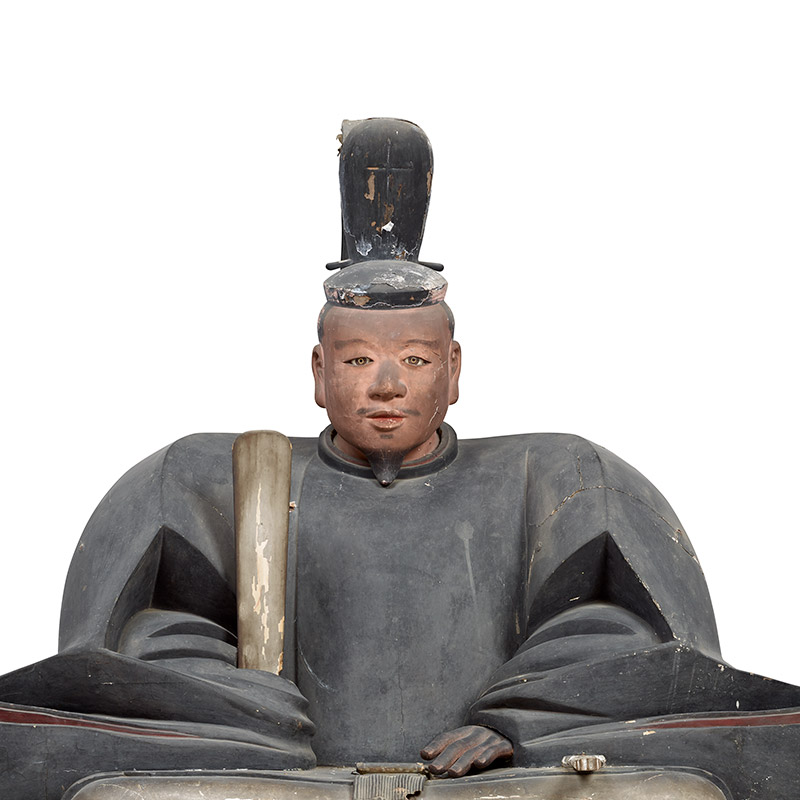
The Popular Leader
2nd shogun:
Yoshiakira
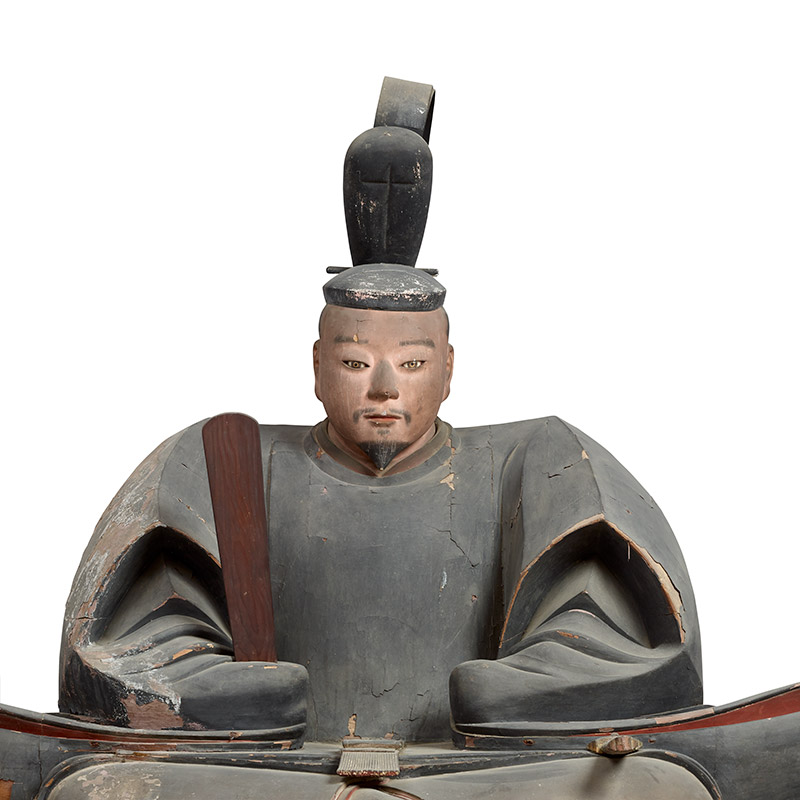
The Key to Solidifying Power
3rd shogun:
Yoshimitsu
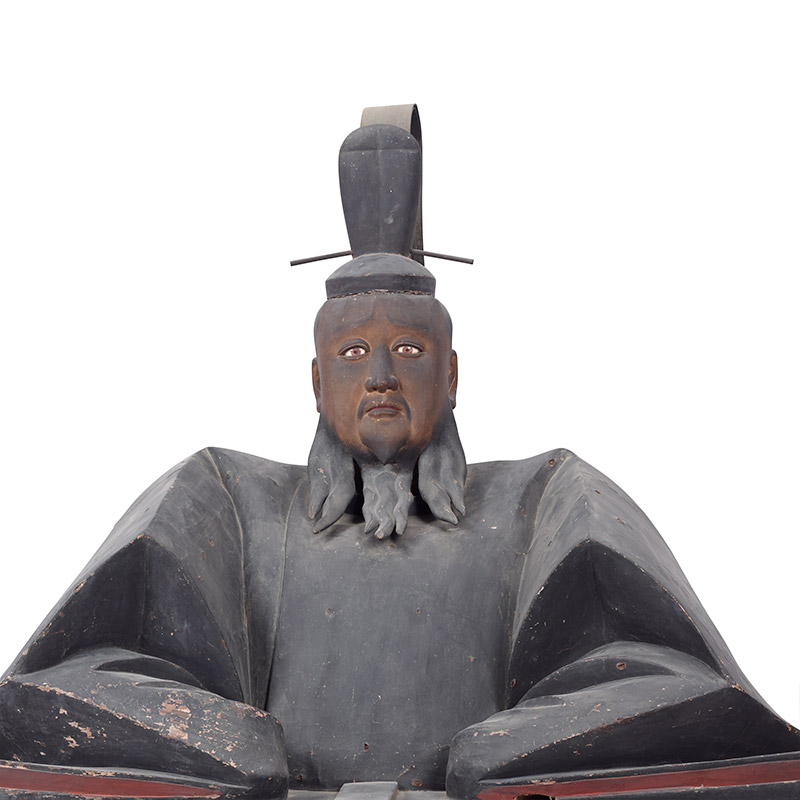
The Shogun with Unrivaled Charisma
4th shogun:
Yoshimochi
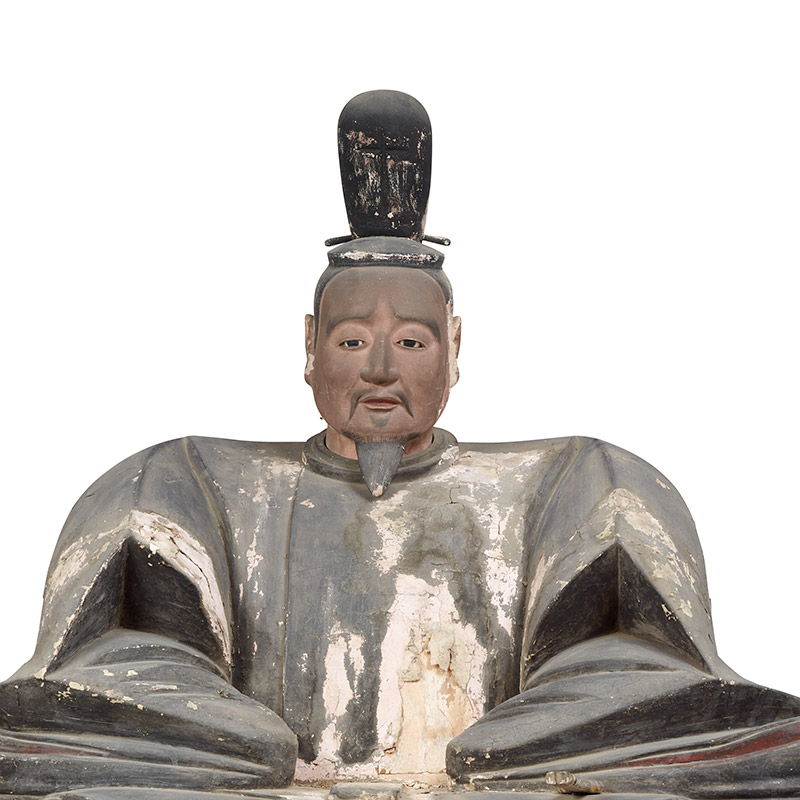
The Wisest Shogun of All Time
6th shogun:
Yoshinori
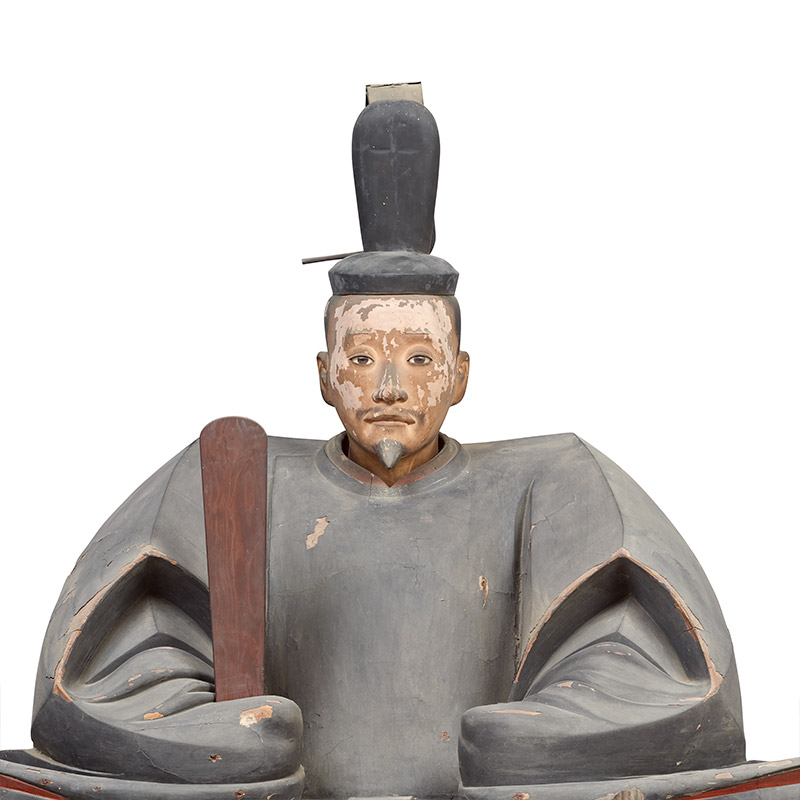
The Chosen One
7th shogun:
Yoshikatsu
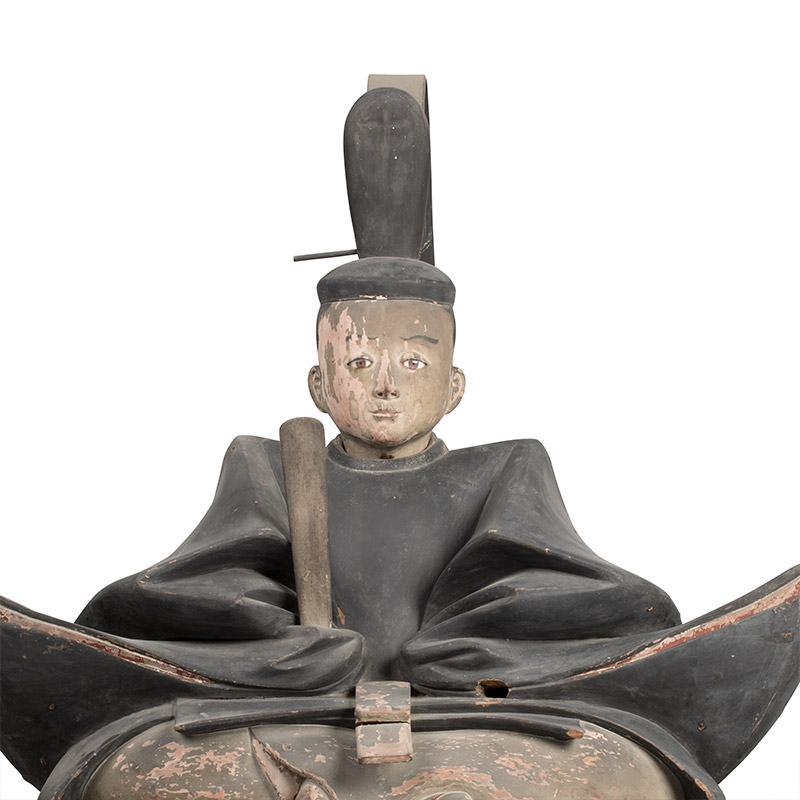
The Smiling Child Shogun
8th shogun:
Yoshimasa
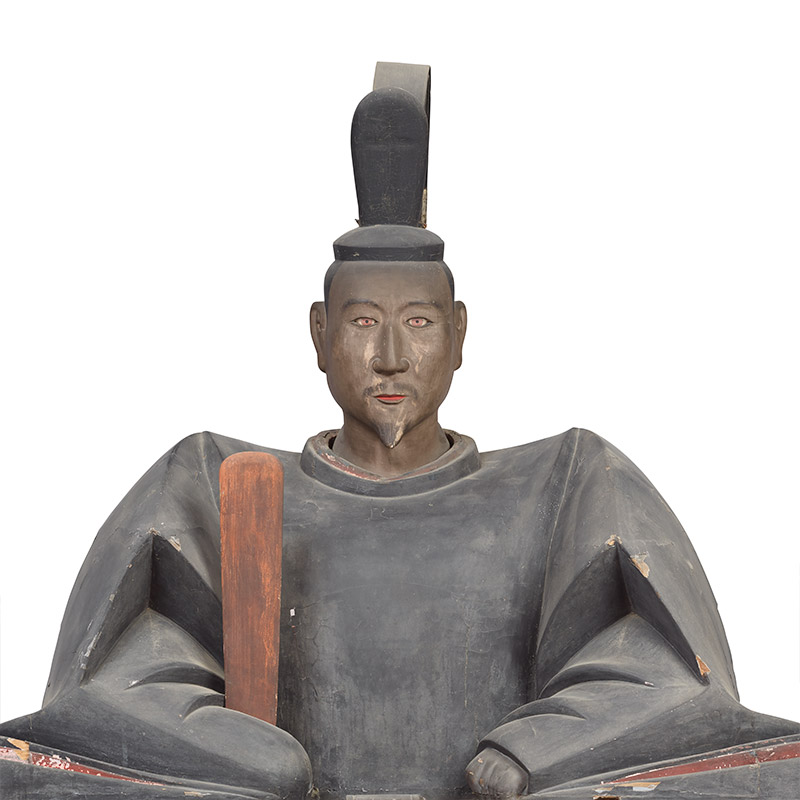
The Culturati Who Invited Chaos
9th shogun:
Yoshihisa
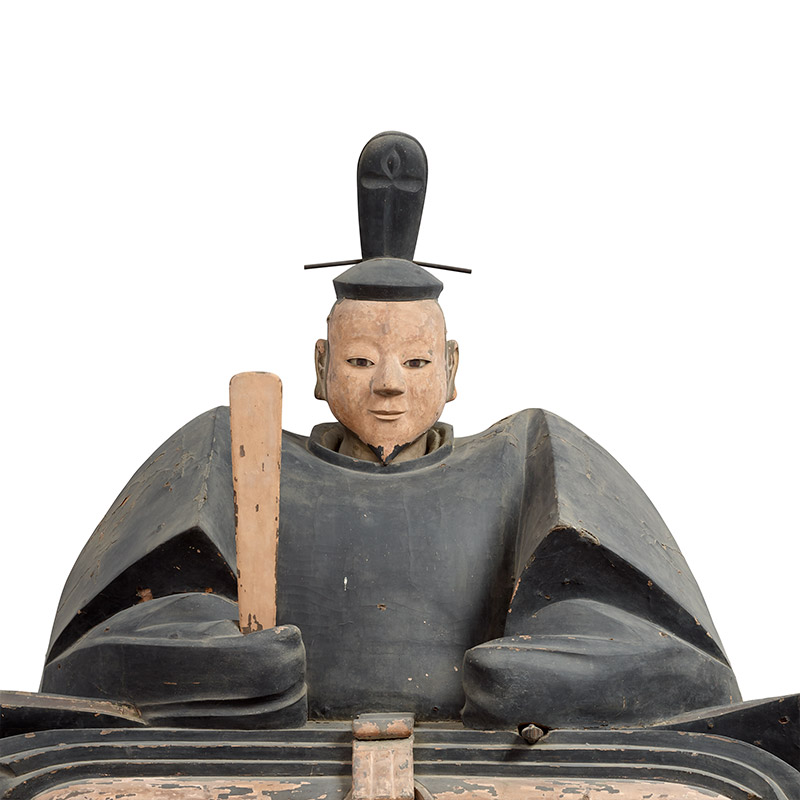
The Young Shogun Who Died In Battle
10th shogun:
Yoshitane
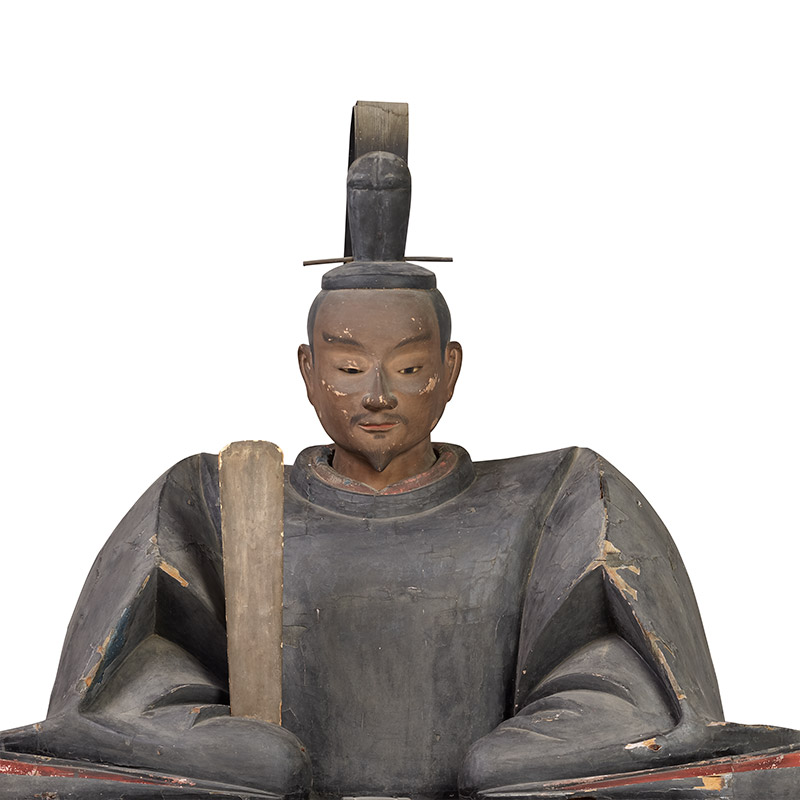
The Tenacious Shogun Who Reclaimed His Post
11th shogun:
Yoshizumi
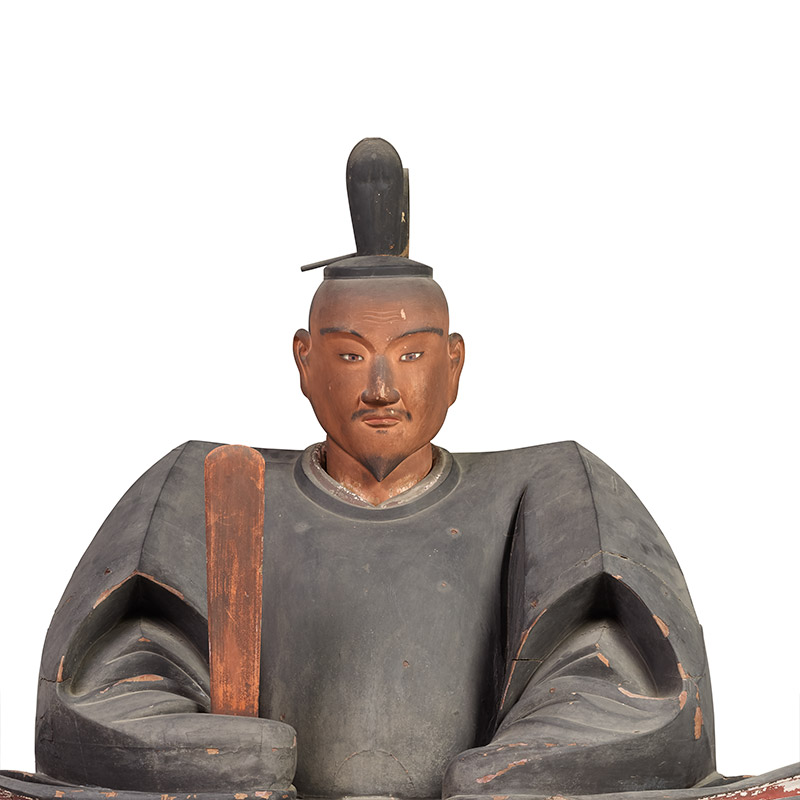
The Dethroned Usurper
12th shogun:
Yoshiharu
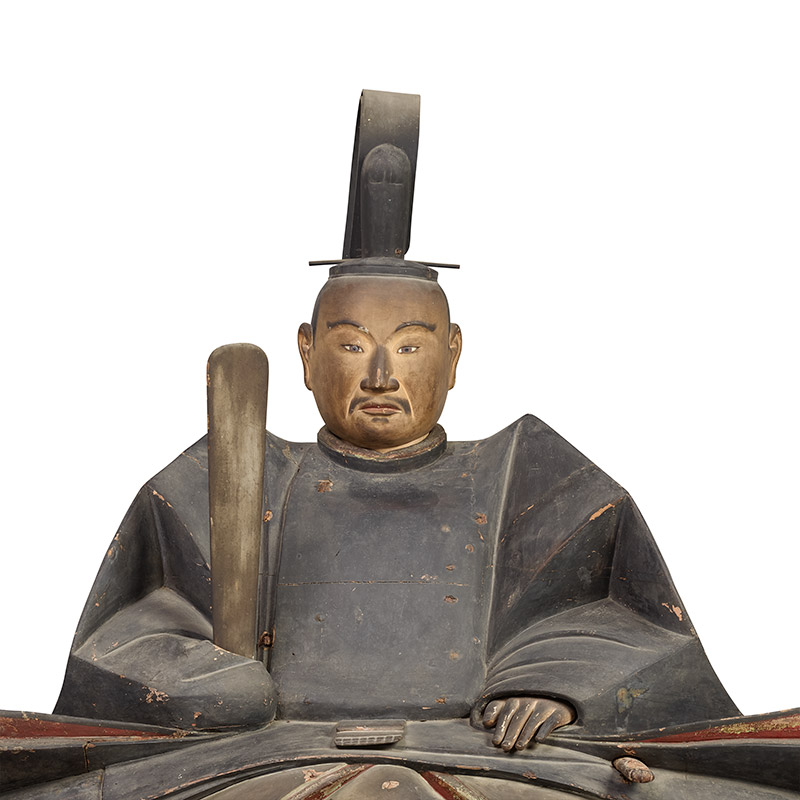
The One Who Dreamed of Restoring His Shogunate at Lake Biwa
13th shogun:
Yoshiteru
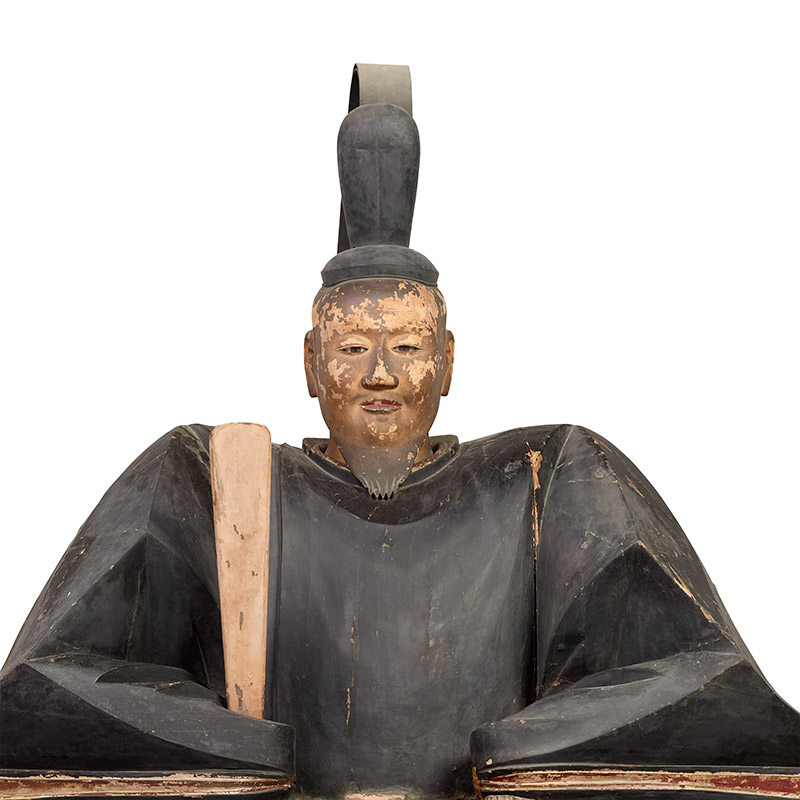
The Shogun Who Died With Regrets
15th shogun:
Yoshiaki
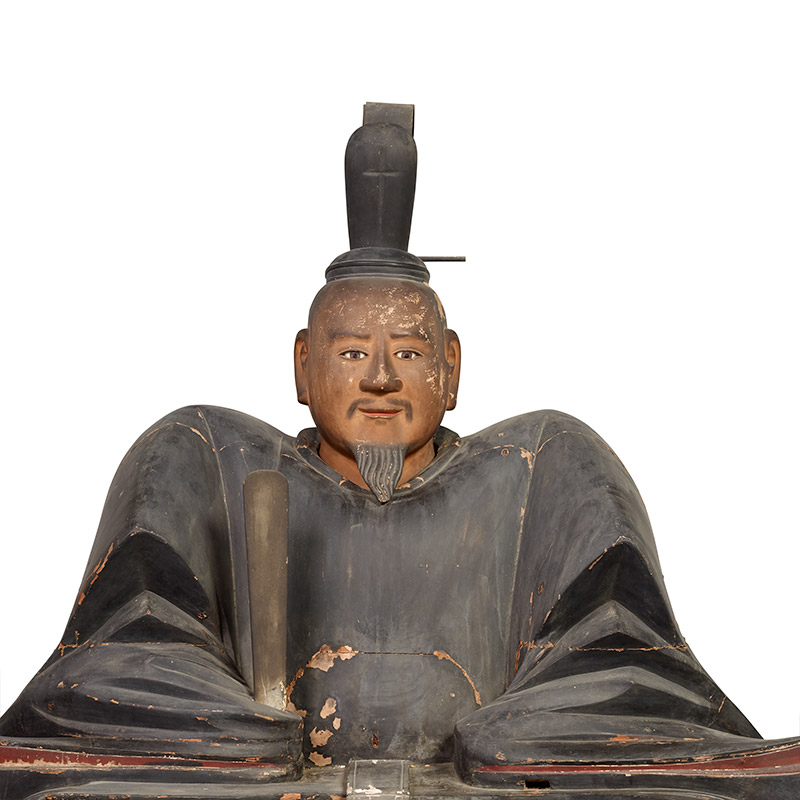
The Shogun With The Pipe Dream of Returning To The Capital
Seated Statues of Ashikaga Shoguns
Muromachi-Edo period
Toji-in Temple, Kyoto
The Toji-in Temple, which follows the Rinzai school of Buddhism, was built in 1341 by Ashikaga Takauji, and founded by Muso Soseki. Life-size statues of successive shoguns (with the exception of 5th shogun, Yoshikazu, and 14th shogun, Yoshihide) are enshrined in Toji-in.